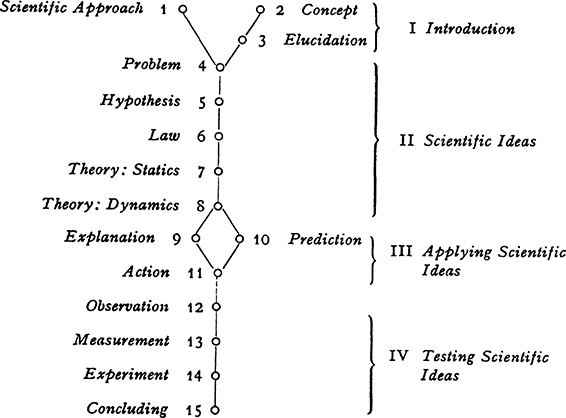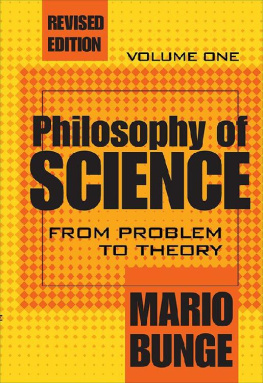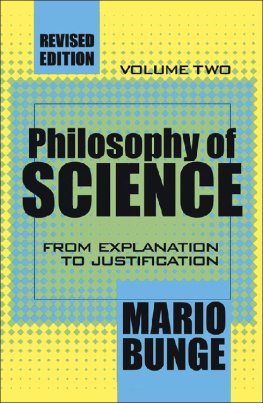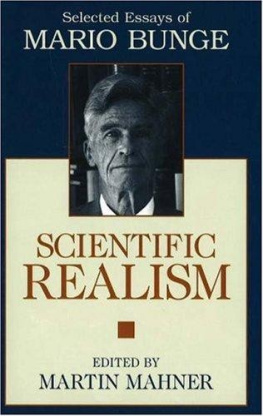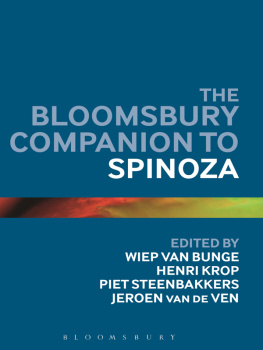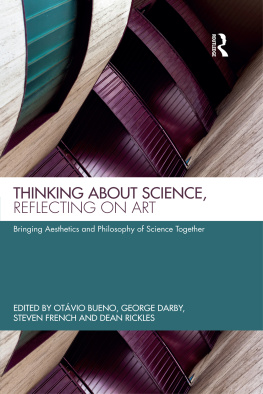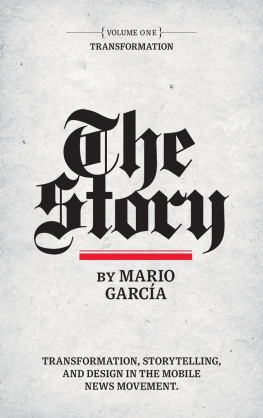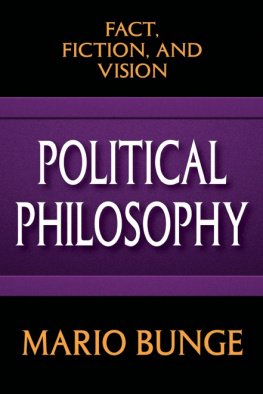Philosophy of
SCIENCE
Science and Technology Studies
Mario Bunge, Series Editor
Philosophy of Science, Volume 1: From Problem to Theory ,
Mario Bunge
Philosophy of Science, Volume 2: From Explanation to Justification ,
Mario Bunge
Critical Approaches to Science and Philosophy ,
edited by Mario Bunge
Micro foundations, Method, and Causation:
On the Philosophy of the Social Sciences , Daniel Little
Complexity: A Philosophical Overview ,
Nicholas Rescher
REVISED
EDITION
VOLUME ONE
Philosophy of
SCIENCE
FROM PROBLEM
TO THEORY
MARIO
BUNGE
Original edition published in 1967 by Springer-Verlag
Published 1998 by Transaction Publishers
Published 2017 by Routledge
2 Park Square, Milton Park, Abingdon, Oxon OX14 4RN
711 Third Avenue, New York, NY 10017, USA
Routledge is an imprint of the Taylor & Francis Group, an informa business
Copyright 1998 by Taylor & Francis.
All rights reserved. No part of this book may be reprinted or reproduced or utilised in any form or by any electronic, mechanical, or other means, now known or hereafter invented, including photocopying and recording, or in any information storage or retrieval system, without permission in writing from the publishers.
Notice:
Product or corporate names may be trademarks or registered trademarks, and are used only for identification and explanation without intent to infringe.
Library of Congress Catalog Number: 97-22359
Library of Congress Cataloging-in-Publication Data
Bunge, Mario Augusto.
Philosophy of science / Mario Augusto Bunge.Rev. ed.
p. cm.(Science and Technology Studies)
Rev. ed. of: Scientific research. Berlin, New York:
Springer-Verlag, 1967.
Includes bibliographical references and index.
Contents: v. 1. From problem to theoryv. 2. From explanation to justification.
ISBN 0-7658-0415-8 (set: pbk. : alk. paper).ISBN 0-7658-0413-1 (v. 1 : pbk. : alk. paper).ISBN 0-7658-O414-X (v. 2: pbk. : alk. paper).
1. ResearchMethodology. 2. SciencePhilosophy. I. Bunge, Mario Augusto. Scientific research. II. Title. III. Series.
QI80.55.M4B64 1998
001.42DC21 97-22359
CIP
ISBN 13: 978-0-7658-0413-6 (vol. 1) (pbk)
ISBN 13: 978-0-7658-0415-0 (set)
A Foretale of Five Philosophers of Science
The five Wise Men of the Kingdom of * were back from their long sojourn in the remote Republic of **. They stood trembling before their terrible sovereign, the Queen of *. They had to report on the Strange Beast that dwells in the land they had visited.
Tell Us, O wise Protos, what does the Strange Beast look like? the Queen asked the elder sage.
The Strange Beast they call Science, your Majesty, can register and compress all facts. In fact Science is a Recorder and Compactor all in one. Thus spake Protos.
Off with his head! shouted the Queen, purple with rage. How could We believe that the Strange Beast is a mindless recorder if even We sometimes grope, doubt, and make the occasional mistake? Whereupon she addressed Deuteros, the next oldest savant.
Tell Us, O wise Deuteros, how the Strange Beast looks.
The Strange Beast, your Majesty, is an information processor. It takes in tons of raw data which it processes to order. Science, in short, is a huge Computer. Thus spake Deuteros.
Off with his head! shouted the Queen, green with rage. How could We believe that the Strange Beast is an automaton, if even We have dreams and whims? Whereupon she addressed Tritos, the middleaged sage.
Tell us, O wise Tritos, what does the Strange Beast look like?
There is no such thing, your Majesty. Science is only a Game. Those who play it stipulate the rules, which they change from time to time in mysterious ways. Nobody knows what they play or to what purposeexcept perhaps to gain power. Let us agree then that Science, just like football, is a Game. Thus spake Tritos.
Off with his head! shouted the Queen, yellow with rage. How could We believe that the Strange Beast could survive without taking things seriously, if even my chambermaid does? Whereupon she addressed Tetartos, the mature savant.
Tell Us, O wise Tetartos, how does the Strange Beast look?
The Strange Beast, your Majesty, is a woman who meditates and fasts. She has visions, tries hard to prove them wrong, and feels no better when she fails. Science, I conjectureand I challenge anyone to refute meis a Flagellant Visionary. Thus spake Tetartos.
Off with his head! shouted the Queen, white with rage. How could We believe that the Strange Beast cares neither for justification nor for gratification, if even We do? Whereupon she turned to Pentos, the young sage.
But Pentos, fearing for his head, had just managed to escape. He ran for several days until he crossed the border. He then came to my office, where he has been working ever since. Pentos has finally completed his somewhat bulky Report on the Strange Beast: Its Anatomy, Physiology, Behavior, and Inner Life , which I have translated into English.
Haunted by his painful memories of the rude manners prevailing in the court of the Queen of *, Pentos wishes to remain anonymous. He fears, perhaps rightly, that his account of the Strange Beast will be unpopular, fond as most people are of simple, white-and-black creeds that can be learned with ease and be held on to with certainty. His is, in effect, a much more complex view of Science than either the Recorder, the Computer, the Game, or the Flagellant Visionary models, although he acknowledges his indebtedness to all four of his unlucky late colleagues.
The above explains why the fifth report on the Strange Beast comes out under a different title and a different authors name. May this trick save Pentos from the wrath of the zealous followers of simple creeds.
Note added in proof. The Four Wise Men of * are still alive. Protos and Deuteros survived because the executioner found no heads to cut. Tritos, because he grew himself a new skull by convention. Tetartos, because he figured a new brain for himself as soon as his former one was falsified.
How to Use This Book
This is a treatise on the strategy and philosophy of science. It is an attempt to describe and analyze scientific research, as well as to disclose some of its philosophical presuppositions. This work may then be used as a map to identify the various stages in the road to scientific knowledge. It is an update of the authors Scientific Research (Berlin-Heidelberg-New York: Springer-Verlag, 1967, 1973).
This treatise is divided into two volumes of two parts each. (with emphasis on construction). This closes Vol. 1, From Problem to Theory . Vol. 2 opens with Part III, Applying Scientific Ideas . Ch. 9 deals with the application of theories to explanation and Ch. 10 with their application to prediction and retrodiction. Ch. 11, on rational action, belongs to the philosophy of technology. Finally Part IV, Testing Scientific Ideas , opens with observation (Ch. 12) and goes on to measurement (Ch. 13) and experiment (Ch. 14). The jumping to conclusions from data to hypotheses and conversely (Ch. 15) completes Vol. 2, From Explanation to Justification . Look at the structure:
A look at the logical relationships among the chapters as displayed in the previous diagram should help the reader to use the book and understand the philosophy of science it proposes.

